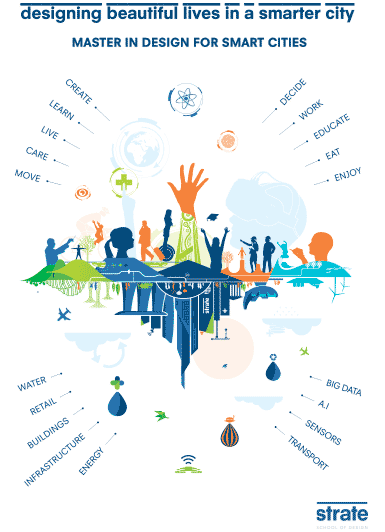Smart cities can be described as cities capable of using information technology to create efficiencies and create sustainability, and improve the quality of life of it’s residents. A smart city is basically a living entity, capable of extraordinary adaptations that we once thought were not possible. This post will be discussing smart cities, including what makes a smart city, it’s benefits, it’s effects on the environment, and what negative effects, if any it might have on it’s citizens and the world as a whole.
The benefits of smart cities
Efficient distribution of resources
Smart cities have an overall better organization and infrastructure. All the sectors are involved in a complex interplay that simplifies everyday life for people who live and work in the city. The cameras at the bus stops can identify how many people are waiting to board; the sensors on the approaching bus know how many people ride the bus at any given point in time, and how many people are currently on the bus.
The combination of the information from the bus stop and the bus then leads to the city’s response. There can then be redistribution of people and buses if it appears that the current course of events will not be efficient.
Seamless communication
Communications between the various systems and sensors in a smart city is very important. In fact, without them the smart city cannot efficiently redistribute resources and make citizens’ lives better. However, smart cities bring about a different, equally efficient communication–the communication between the citizens and the government of the particular city.
In prior times, policies and programs were made based on what the government perceived to be needed by the city. This often led to massive oversights and the omission of key policies altogether. In a smart city, the policy makers have all they could ever need to make informed decisions. The information gathered all across the city provide an invaluable line of communication between the needs of the city, and the people who can address those needs.
Speed of implementation
Still on governments and policies, every country with a democracy can testify to the fact that it takes quite a while for policies, or any sort of new development to get implemented. This is partly due to bureaucracy and the multiple levels of government, and also partly due to the human factor.
Smart cities overcome these problems very easily. Because the points that need improvements have already been identified, the implementation becomes easier. All the automation, analytics, and sensors contribute to making it easier for most of the changes to be implemented remotely, creating a seamless flow of change from conception to execution.
Environmental benefits of smart cities
The preservation of the environment has always been about reduction of consumption, while promoting the creation of sustainable systems. Smart city accomplishes all of these and more through its efficient distribution. For starters, water management systems, transportation systems, energy and power grids, and general city wide operations are optimized, thereby reducing waste.
We have already discussed how the systems can improve transportation. An efficient system of transportation directly translates to less carbon emission, and less damage to the environment.For instance the smart city of Bhopal in India is impleting policies to achieve a more sustainable environment. Also, consider how the redistribution of power can improve the environment.
An optimized power grid improves overall consumption by reducing the energy supply to areas of low demand and increasing the supply to areas of higher demands. This reduces the overall consumption of power, which in turn reduces the power plant emissions. The result is a much lighter load on the environment.
Master in design for smart cities - Singapore
Master in design for smart cities, now open in Singapore
The Masters in Design for Smart Cities are a 2-year, postgraduate programmes, developed by globally renowned design university, Strate.
The Master Degrees will train Design Managers and Smart City experts. The multidisciplinary approach of combining design, humanities, technology and management, is taught through the model of Design Thinking and Design Doing, where students craft innovative mindsets based on design methodology and extensive hands-on practice.
Components of smart cities
Smart cities have four major components which drive all their major functions. From a brief glance at each of these components, you can already begin to understand how they connect to the bigger picture:
- Connectivity: smart cities use sensors like cameras and motion detection devices to gather information about current events. All of this data is connected to one another, forming an information nexus
- Intelligence: smart cities are intelligent because they have the ability to obtain and utilize knowledge and information.
- Responsiveness: A smart city may respond to this the information in a variety of ways, all towards making everything more efficient
- Sustainability: Of course, one of the major goals is to create a system where resources are used conservatively, and preserved, while creating a sustainable system of operations.
Negative effects of a smart City
Systemic Vulnerability
Skilled individuals have always used malicious methods to extract data from online archives, and then used this information for everything from blackmail to sabotage. For example, several corporations have had their client’s personal information stolen and held ransom by hackers.
Unfortunately, it is fortuitous for these cyber criminals that the same skill set required to create and maintain the information network of smart cities is the same required to hack them. Just like most internet based systems and organizations, smart cities will have to focus as much resources as they do creating an internet based system, as they do defending the system.
Reduced privacy
One doesn’t need to think too hard about the idea of smart cities and their information networks to begin to understand how it might pose a significant threat to privacy. The system depends on an ubiquitous system of surveillance.
There are even proposals incorporating extensive facial recognition technology into the platform. While this has the potential to increase security, it could also undermine privacy. Here too, governments have some work to do to ensure the safety of their citizens’ data.

